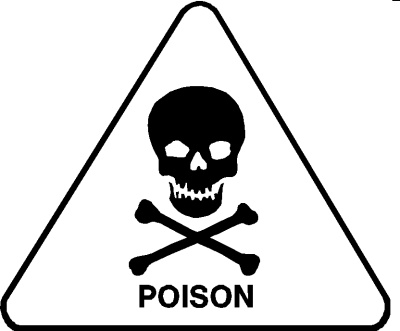Healthy Child, Healthy World is launching an interactive toolkit this week to help you get toxins out of your nursery. I got a sneak preview, but I’ll be honest: haven’t read the whole thing. Truth is, I may never read it. I can never decide how much I actually want to know about toxins around my kids. Much as I like being informed, knowing this stuff never fails to completely freak me out.
Which it shouldn’t. Really. Yes, the world is a dangerous place, and our children are surrounded by toxic chemicals, and everything causes cancer, and we all have to die of something.
(Sidenote. Did you know that in the Middle Ages cancer was considered an ideal way to die? Because it meant you had time to say goodbye to your family and put your affairs in order. It beat the heck out of being stabbed by a highwayman or eaten by a dragon. Just sayin’.)
However. I do not want my kids to die of cancer. Or to get endocrine disorders or hormonal imbalances or severe allergies or asthma. None of which are caused by environmental toxins, necessarily, but all of which may be linked to them.
And since I’m sure that you, too, want to create the healthiest environment for your kids that you possibly can, I’m giving you a sneak preview too, in the form of a list of some of the scariest toxins (scariest in my totally random, unscientific, personal view) that are probably in your house. Luckily, these are all toxins you can totally get rid of. Sort of. Then you can stop worrying. At least until you get the toolkit and read about all the toxins I left out.
You’re welcome.
1. Bisphenol A (BPA)
Why it’s scary: Because you hear all the time about how dangerous it is. Even if you don’t read about eco issues, you’ve seen the “BPA-free” packaging on baby items, which instantly made you wonder what things you already have in your house that were manufactured before all the outcry against BPA, and you realize that you probably have ten thousand things in your house with BPA in them.
Also, it’s associated with hormonal problems like low sperm count, breast cancer, obesity, and early puberty.
Where you find it: In plastics. Scariest part? Even the ones that are labeled “BPA free” might not be. That label isn’t certified by any third party.
How to avoid it: Skip the plastics. Wooden toys are prettier anyway. If you must have plastics, look for opaque plastics with the recycling number 2 or 5. And, of course, the BPA-free label, although it’s best to also research the company to find out if the label is accurate.
2. Flame retardants
Why they’re scary: Because they’re in everything. Especially things that your baby spends a lot of time around, like crib mattresses, pajamas, blankets, and car seats. They’re linked to everything from cancer to neurological and hormonal disruptions to lower IQ.
But it’s also scary to not have them, because what if your toddler somehow gets hold of that box of matches you were using to try to have a romantic candlelit dinner and starts a fire in his diaper pail? Then you will be glad if he’s wearing flame-retardant pajamas.
Where you find them: Like I said: everywhere. Anything with foam in it probably has them, as does all furniture and anything designed for sleeping. Manufacturers aren’t required to label products that have chemical flame retardants, so you can usually assume they do.
How to avoid them: Buy organic sleepwear and mattresses. Wool is naturally flame resistant, so that’s what they use in organic crib mattresses. If you can’t afford organic wool mattresses, polyester is better than foam, because it’s made flame retardant with silicon instead of chemicals. Wool pajamas are also naturally waterproof, especially if you treat them with lanolin. And we all know why waterproof pajamas are a good idea.
3. Formaldehyde
Why it’s scary: It causes cancer. As in, it’s not just suspected that it might cause cancer. It’s a known carcinogen. Also, it’s the same stuff that they used to preserve the dead frog you dissected in high school biology. That awful smelling liquid that took days to wash off your hands? Yeah. Gross.
Where you find it: Any furniture with pressed wood like particle board. Also in lots of skin care products. (Which makes absolutely no sense, if you think about it. Maybe we’re trying to preserve dying skin by treating it with embalming liquid?)
How to avoid it: Buy real wood furniture. If you can’t afford solid wood, skip the furniture. Seriously. Your baby is going to chew on it anyway. Most of the time you can hold off on buying furniture till you find the right piece. We have only bought solid wood furniture for years now, because my husband hates particle board with a deep and abiding passion (I think he’s broken too many dresser drawers or something), and you can find some great deals. We bought an entire bedroom set for our daughter off Craigslist (bed, dresser, nightstand — all solid wood) for $300.
4. Lead
Why it’s scary: It’s been linked to behavior problems and learning disabilities. Also, it may have caused the fall of the Roman Empire.
Where you find it: Paint in older buildings and PVC products like vinyl floors, plastic blinds, shower curtains, and waterproof mattresses.
How to avoid it: If you live in an older house, have the paint tested. If you have lead paint, don’t remove it yourself — hire a professional. This is really worth it because if you leave it there, it can deteriorate and get into dust particles that your kids will breathe. And avoid vinyl products, especially teethers and toys.
5. Phtalates
Why they’re scary: They’re associated with cancer and reproductive problems. I am scared of anything that could cause reproductive problems. I don’t want anything to mess with my future grandkids.
Also, they’re kind of in everything. See below.
Where you find them: In PVC plastic, which is about a million and a half things right there, and also in skin care products and some wood finishes. (Just when you got the lead out of your paint.)
How to avoid them: Seriously, skip the plastic and vinyl. If you need toys, buy wood; if you need waterproof, buy wool. I know everything is plastic and your baby loves plastic but PLASTIC IS FULL OF TOXINS, PEOPLE!
That said, I totally have plastic toys in my house. A few. All things in moderation. I try to redirect teething to wooden toys or raw carrots.
Are you scared now? I understand. Really, I do. I hate knowing this stuff. Ignorance is so much happier. But it’s good to be aware. If you have some idea of the common toxins, at least you can lessen your exposure. Even PVC plastic is probably okay in moderation.
And look at the bright side. Your modern home is probably full of carcinogenic chemicals. But your child’s chances of being eaten by a dragon are pretty much zero.

